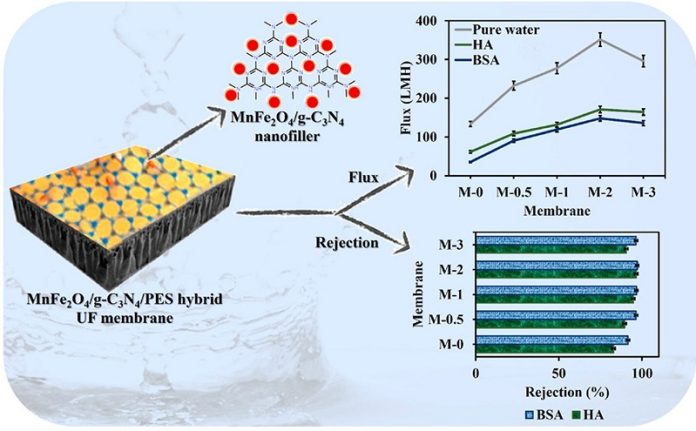
Scientists have discovered a new way to dramatically increase the availability of clean drinking water worldwide using manganese ferrite nanoparticles.
These tiny particles could revolutionize water treatment by improving the filters used in water treatment plants, making it easier and more efficient to produce potable water.
Dr. Ismail Almanassra, a research associate at the University of Sharjah’s Institute for Science and Engineering, and his team have found that adding just a small amount (2%) of these nanoparticles to the filters, known as polyethersulfone (PES) membranes, can lead to remarkable results.
The modified membranes allow water to flow through them at a rate 2.6 times faster than traditional membranes, making the water treatment process much more efficient.
PES membranes are a crucial part of water treatment plants.
They act as barriers that let clean water pass through while blocking out salts, impurities, and other unwanted substances.
These membranes are also used in desalination (the process of removing salt from seawater), food processing, and wastewater treatment.
The study, published in the Journal of Membrane Science, shows that the new ultrafiltration (UF) membranes created by the researchers not only improve the flow of water but also do a better job of removing contaminants.
This could lead to cleaner, safer drinking water and lower costs for water treatment plants.
One of the biggest challenges faced by water treatment plants is biofouling. This occurs when microorganisms accumulate on the membrane surfaces, reducing their efficiency and leading to lower water production.
To combat this, engineers often have to increase the pressure on the membranes or replace them frequently, both of which increase operational and maintenance costs.
The researchers tackled this issue by modifying the PES membranes with manganese ferrite nanoparticles and a material called graphitic carbon nitride.
This combination makes the membranes more hydrophilic, meaning they attract water and repel contaminants more effectively.
As a result, the membranes are better at filtering out harmful substances and are less likely to become fouled over time.
The new membranes were tested extensively, and the results were impressive. They successfully removed over 95% of harmful agents, and even after being washed, they retained over 88% of their effectiveness.
This means the membranes are not only better at cleaning water but also more durable and cost-effective in the long run.
Dr. Almanassra and his team believe that this breakthrough could have a significant impact on global water scarcity and pollution.
By providing a more efficient and affordable way to treat water, these new membranes could help ensure that more people around the world have access to clean, safe drinking water.
The technology also has potential applications beyond water treatment, making it a significant advancement in material science with broad implications for public health and environmental sustainability.



